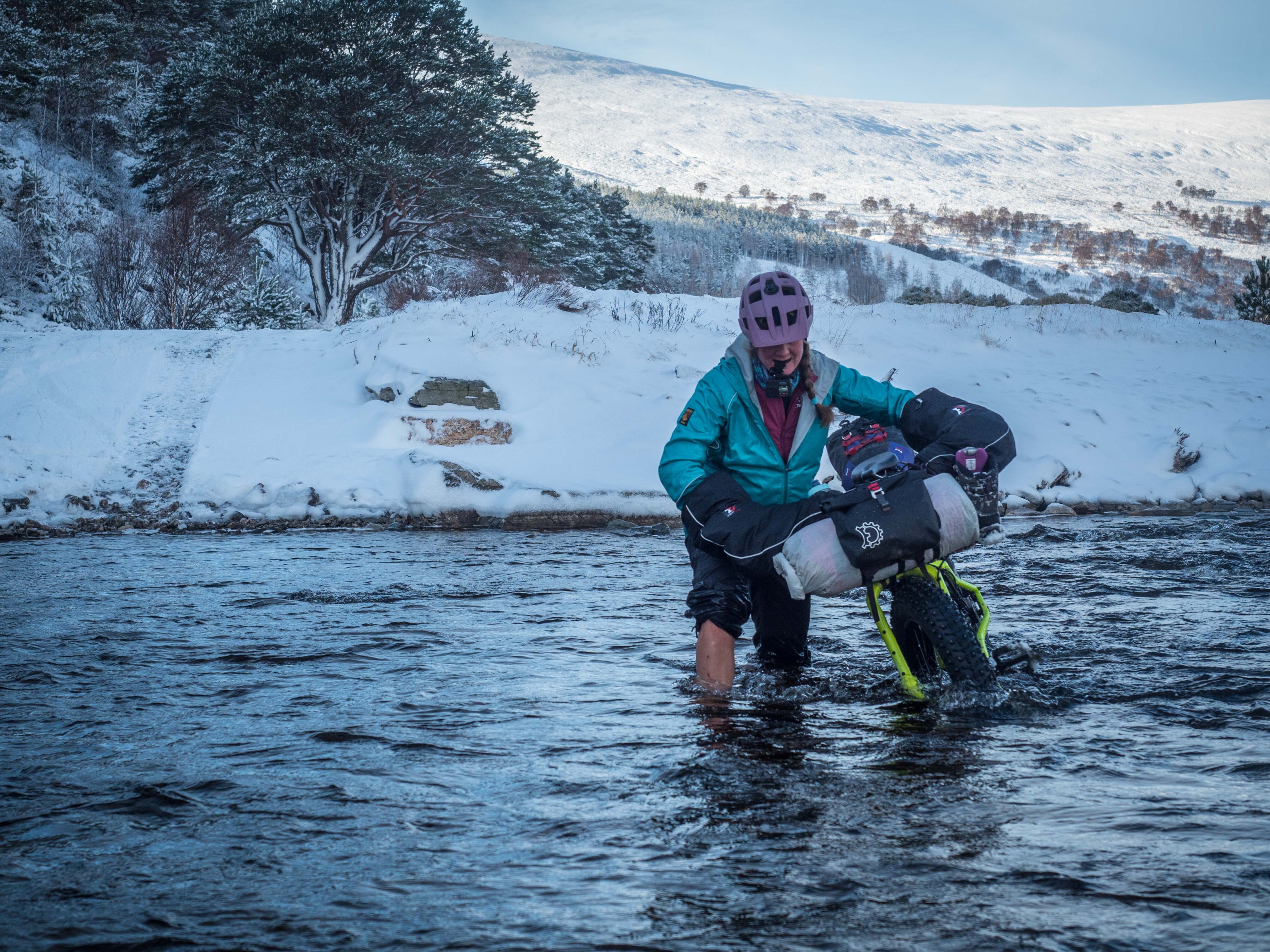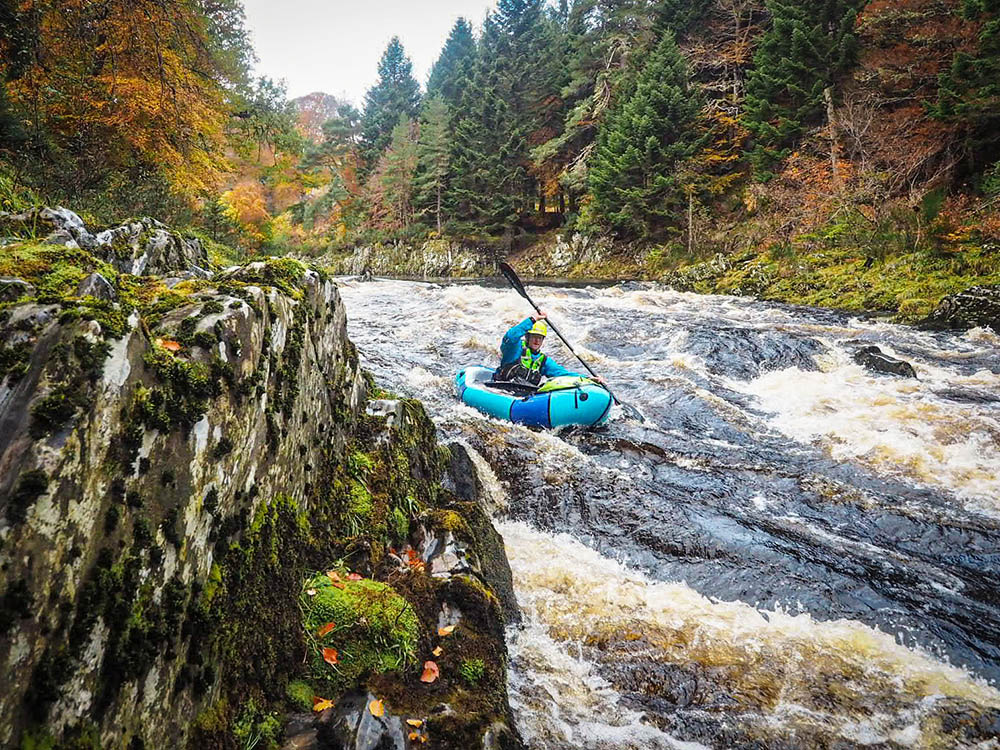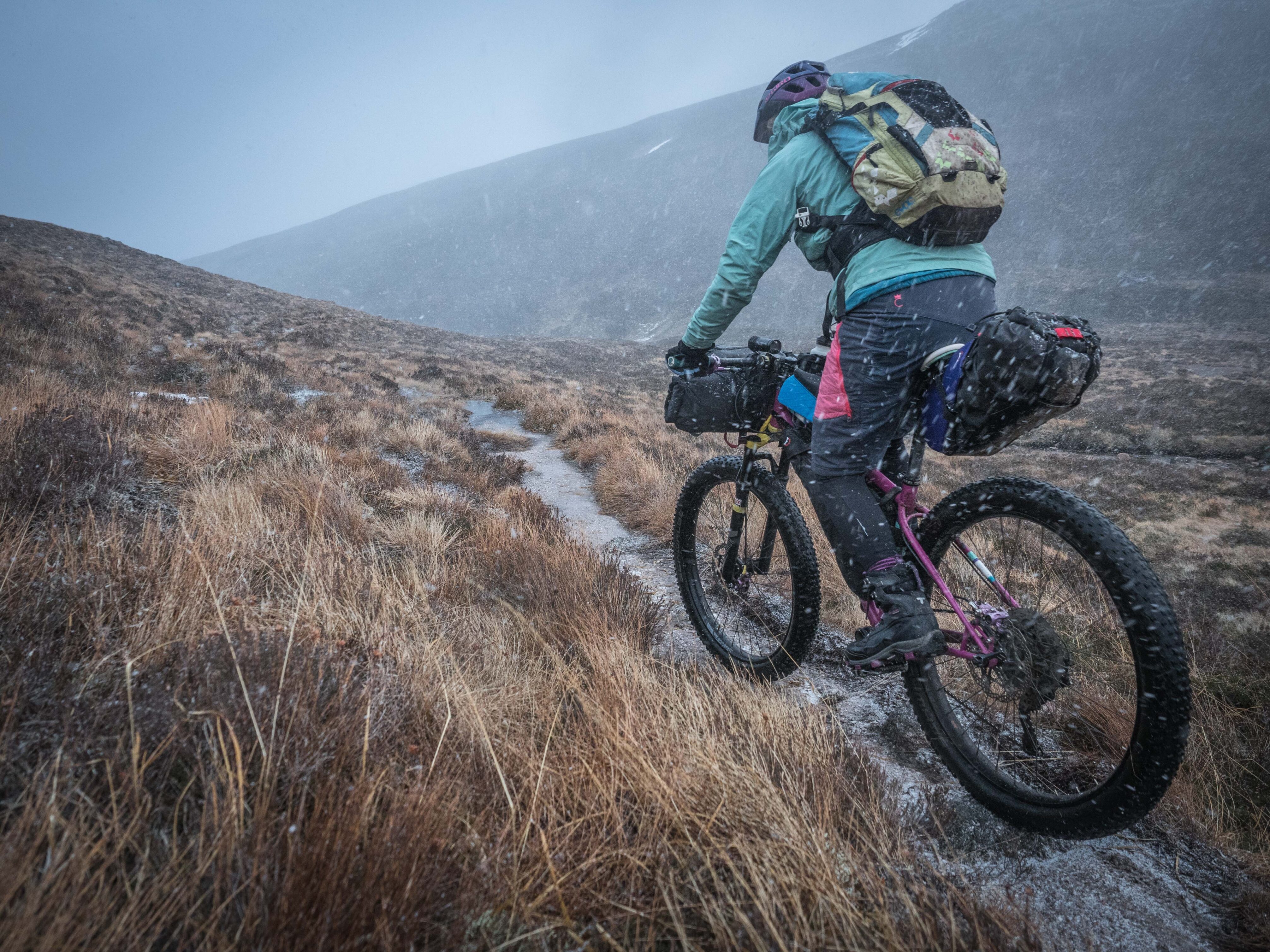Knowledge weighs nothing: the backcountry safety tips we wouldn’t leave home without
It’s still deep winter here in the northern Cairngorms. The temperature hasn’t risen above zero for a few days, nose hairs tingle on the inhalation of frosty air, and there’s more snow forecast to cover the already well-packed trails and thickly blanketed mountain tops. Getting any riding done at all is a challenge at the moment unless you own a fatbike, a pair of studded tyres or both, and most folks have their sights set firmly on the ski touring possibilities of the best snow coverage in years.
Any adventure sport, whether it’s on trails, snow, water or rock, requires us to constantly examine and assess our surroundings, allowing us to make the decisions that keep us happy and safe. Biking is perhaps a little behind the times on this front — the worlds of skiing, paddling and climbing have very prominent cultures of education around risk management, and make conscious efforts to give everyone the tools to make their own decisions as safely as possible. It might be because, on the whole, we as riders don’t face quite the same dynamic risks as swift moving water or unstable snowpacks, but decision-making and risk management in the backcountry aren’t given quite the same prominence in our own riding culture. It’s there, just not front and centre.
Pack for the worst, but hope for the best
“ When I’m trying to work out what to carry, I always try and think about that worst case scenario and how far away help might be. In many parts of the highlands you might be looking at 5 hours+ for a rescue team to get to you. You need to be able to keep yourself warm whilst you wait, in whatever weather you are in. When you see people’s rad photos, remember that you don’t know the full story, and you don’t know what skill set they have to make that trip safe for them. Just because you saw it on instagram, doesn’t mean it’s a good idea to copy it”
Annie Le
Taking a leaf out of other people’s books
‘Backcountry’ travel is of course something we’re pretty keen on. The BackcountryScot staff are also skiers and paddlers, and our experience as professionals across different activities has made it obvious that when riding in the backcountry we would do well to take a leaf from other sports’ book — riding in remote places demands a lot more of our decision making skills than a quick loop of the local trail centre, and there’s a lot of useful information out there to help us make those decisions. We need to look to other sports and adopt the same mindset and skills that they have, so this blog will introduce a few ideas that weigh nothing, yet can make a big difference to your own personal toolkit.
Heuristic Traps
First stop is the worlds of winter mountaineering and snowsports, and ‘heuristic traps’. If you’ve not come across them before, heuristic traps occur when our brains take shortcuts to make complex decisions, ignoring the reality of the situation in front of us. They’re often used in relation to assessing avalanche risk, but can just as easily apply to our decision to make a dicey river crossing. A common way to remember them is FACETS.

Familiarity
The idea that because you have done something before, it seems less risky. A good example would be riding a local loop without any emergency gear or telling anyone where you’re going. You’ve done it a hundred times before so it doesn’t seem risky, but a bad crash can be just as serious one mile from the road as it can be 100 miles from help.
Acceptance
Our tendency as humans to do things that we think will make others like/accept us. We’re all guilty from time to time of doing something outside our abilities in order to rake in the kudos or get that instabanger, but it can lead us to ignore warning signs.
Commitment/Consistency
Possibly the most common with regards to bike routes that follow a linear trail. We have the binary choice of continuing or turning back, and it can be tempting to put our heads down and carry on, committing well past the point of darkness/cold/injury or deteriorating weather. It’s an important skill to recognise ‘decision points’ in your journey, when you have time to take a breath and think carefully before committing to the next section or making an alternative plan.
Expert Halo
the assumption that a formal or informal group leader’s judgement is infallible because their knowledge is perceived to be greater than our own. For example, thinking that the river crossing must be okay because one person says confidently that they think it is, despite being unsure yourself.
Tracks/scarcity
‘Tracks’ comes from skiers looking for fresh powder all to themselves and seeking untracked areas, but the idea of scarcity might apply to anyone who is time-crunched and looking forward to a break and some adventures. Your precious free time is scarce, and although the forecast is for wind and rain you think that this weekend is your only chance to go and ride the Cairngorms Loop… That scarcity can lead to confronting dangerous conditions because it overshadowed all the other factors.
Social Proof
Especially relevant in the age of social media! The idea that because other people did it, it must be fine. An instagram post does not tell us about those people’s level of experience, their equipment or the planning and decision making that led to the end result.
Having these labels doesn’t make us immune from the traps, but it does make it easier to stop, take a breath and check that the decisions we’re making don’t fall under one or more of these categories. For a detailed example taken from the ski-mountaineering world, take a look at this article from Outside Online.

The juggling act
Another handy model that I was reminded of by a local paddlesports instructor is the triangle of team – terrain – conditions:

It might come from the leadership coaching world, but often enough we find ourselves playing full or partial leadership roles as part of a group of friends, and making decisions that affect people’s safety in the backcountry. It’s a simple enough graphic to understand, but it highlights the fact that there are multiple factors to think about in making safe plans, and one or all of those factors can be changing around you. Ideally, we should be be aiming to push our comfort zones in just one of these areas at any one time, e.g:
- If some or all of the team are injured/tired/nervous, the terrain and conditions want to be mellow enough to enable a safe/good time.
- Terrain that challenges the group’s abilities is going to require good conditions and a strong-feeling team
- Poor conditions should be leading us to choose a ‘friendlier’ route and ensure that the team are feeling good about the plan.
Just like the FACETS, acronym, I visualise this graphic often when making plans both professionally and personally, and it makes a good prompt to kickstart my head into making good choices! As we take on longer, more challenging rides these skills play an increasingly important role, as part of the adventure is playing around with those safety margins and seeing what we are really capable of… The Further-Faster course focuses on more advanced planning and self-care skills to tap into that area of development.
Realising what you know, and what you don’t…
It’s important to be careful about how we gain the knowledge and experience necessary to enable our adventures, ensuring that we walk before we can run. It’s very easy to feel like a superhero after a little bit of adventure time… what I mean is, it’s very easy to get yourself into a situation where that ‘what if’ can spiral out of control and need a considerable depth of experience to get out of it — or luck! but I’m not a lucky person so let’s not count on that. I draw on over 20 years of outdoor experience in kayaks and canoes, commercial rafts and almost 10 years in packrafts, being in the mountains on feet or bicycle or rope, backcountry skiing and snowboarding, and I still have ‘oops’ moments, but I can quickly work out a get around or pull it back from the brink. This ability comes from years of getting it wrong…. Wrong just enough to learn from, but not enough to bust me up. There’s definitely a bunch of things I’d do differently now. I’d do a lot more reading and learning and realising my inexperience.
Andy Toop

Other resources
Of course, the paddling world has heaps of existing information to keep paddlers safe on the water. There is a tendency in packrafting to come from a hiking/biking background and miss out on that crucial development of safety and situational awareness. Alpacka raft have pooled some great safety resources on their site, and of course we run our own packrafting-centric white water safety and rescue courses.
Planning and safety skills are just as important (if not more so!) than any technical skills for backcountry travel and adventure. The more available the information, the more we share our mistakes and successes, the more we can all learn, grow and empower ourselves to get out there and do it. The most important thing is not to be ashamed of failure but to see it as a learning opportunity for next time. Hopefully this post gets you started on thinking some thoughts and questioning some assumptions, which in turn will see you on your way to becoming a backcountry ninja. See you on the trails!



